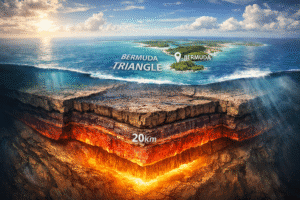Fun Fact: By 2030, the global stream of electronic waste (e-waste) could reach a mind-boggling 2.5 million tons — a digital graveyard we’re building without a map.
What if your old smartphone wasn’t just clutter in a drawer but the trigger for a tech-driven chain reaction? In the blog titled “E-Waste Gets Smart: AI + IoT = Recycling Reinvented”, we dive into how smart sensors, artificial intelligence (AI) and the internet of things (IoT) are coming together—along with something called blockchain—to reshape one of the messiest by-products of our digital lives. Because here’s the truth: the e-waste crisis isn’t waiting for our convenience. And neither should we.
The Growing Problem Nobody Wants to Touch
We produce electronic waste faster than we can recycle it. That outdated laptop, the discarded charger, the “just upgrade” impulse—they all add up. Researchers warn that rising usage of generative AI and large data-centres will fuel that surge even more. The cost? Materials wasted, toxins leaking, and opportunity lost. The consultancy group McKinsey & Company estimates that e-waste contains billions of dollars’ worth of recoverable materials.
Introducing the ‘Green Grid’ Concept
Enter the “Green Grid”: an integrated system that combines IoT sensors in collection bins, AI algorithms to sort devices, and blockchain (a secure ledger) to transparently track every piece of dead electronics. Recently an academic proposal named this very framework.
Here’s how it works in simple terms:
IoT sensors in smart bins tell you how full they are, what kinds of devices are being thrown away, and when collection trucks should come.
AI vision systems detect and classify items—whether it’s a phone, power bank, motherboard, or something else—and route them to the correct recycling stream.
Blockchain ledgers record each step: who collected which device, where it went, what materials were recovered. The result: less dumping, more transparency.
Real-World Wins (and Why It Still Matters for India)
In India, the startup Recykal is already using AI models in its CircularNet platform (powered by Google Cloud) to detect plastics, metals and e-waste materials in real-time. Their results? Material recovery improved by 60 %. Meanwhile, global companies like AMP Robotics use AI platforms to identify recyclable materials with ever-improving accuracy.
For India—where e-waste volumes are soaring and formal recycling infrastructure is still catching up—this “smart grid” approach isn’t just nice-to-have, it’s essential.

Challenges: Because Tech Alone Doesn’t Fix Everything
Let’s not sugar-coat it: deploying smart tech isn’t plug-and-play. Cost barriers, lack of infrastructure, informal recycling sectors (especially in India) still dominate. The promise of AI sorting and smart bins is real—but as studies point out, it depends on policy support, worker retraining, and integration with the broader system.
Moreover, our tech-rich solution must address the human side. An old‐school e-waste collector might lose his job if robots take over. Unless we rethink that transition, we risk repeating old inequalities in new packaging.
What You, the Reader, Can Do
Here’s the thing: you’re part of the grid too. Your upgrade-cycle, your choice to hold onto or recycle a device, your decision to look for proper e-waste drop-zones—all matter. Think of your next phone not just as a shiny object, but as a potential raw material deposit. Encourage local bodies to adopt sensor-enabled bins. Ask whether your electronics brand supports traceable recycling. Because the system will only scale if demand comes from bottom up and top down.
Conclusion: Reinventing Recycling Means Reinventing Responsibility
We stand at a crossroads where tech innovation meets material reality. If “E-Waste Gets Smart: AI + IoT = Recycling Reinvented” becomes more than a headline, then we’re looking at far more than automated sorting machines. We’re looking at an alignment of human habits, digital systems and policy frameworks.
The Green Grid concept could turn our discarded devices from environmental liabilities into resource gold-mines. But only if we act. Let’s stop saying “I’ll recycle later” and start asking “how smart is our recycling?” Your next upgrade might just be the beginning of a smarter loop.
Author’s Note
Late at night, I sometimes stare at my old charger—its frayed cord, the sticker fading—and realise it’s more than a failed accessory. It’s a reflection of how easily we discard invisible problems. Writing this blog mattered because I want us to see that e-waste isn’t someone else’s headache, it’s ours. And writing like this isn’t only about informing—it’s about waking up.
G.C., Ecosociosphere contributor.
References and Further Reading
- Application of artificial intelligence to enhance collection of e-waste
- WasteVision AI: Enabling smart waste management with IoT connectivity
- Smart waste management: A paradigm shift enabled by artificial intelligence
- AI in e-waste recycling: Transforming waste into wealth
- Blockchain and sustainable waste management: A deep dive
- CircularNet: How Recykal built Asia’s largest circular economy marketplace using Google AI
- The enormous opportunity of e-waste recycling




